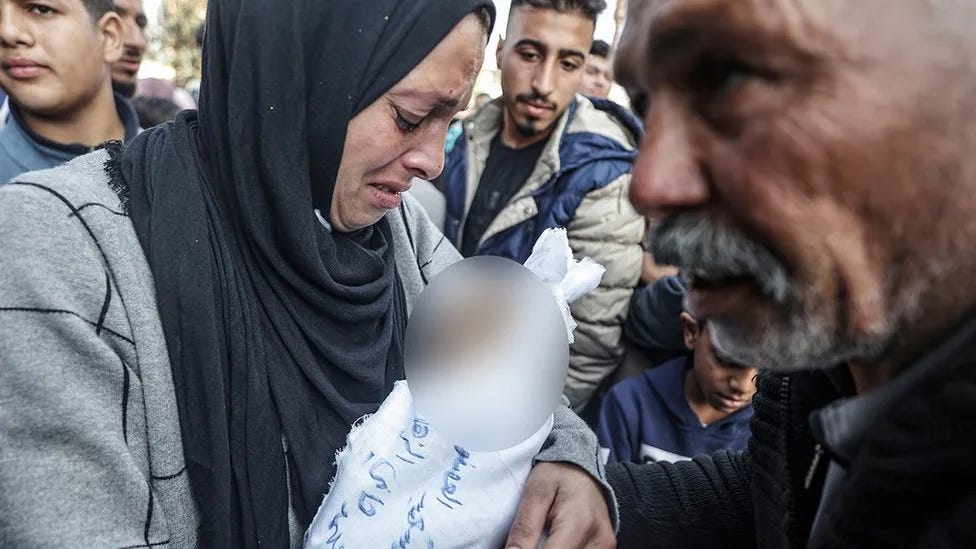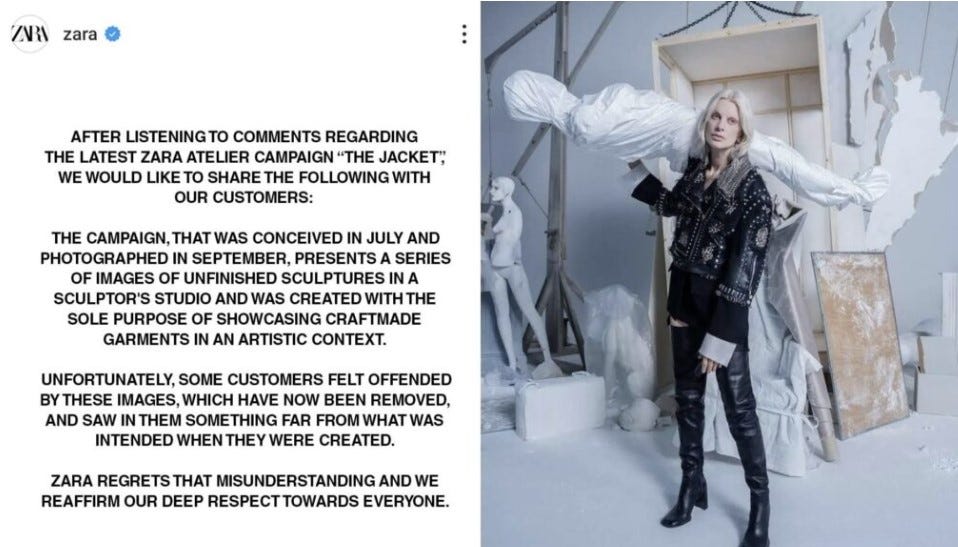The lies of the Gaza conflict will haunt us
The quantity and quality of fake news is expanding exponentially
Unblurred images of Muhammad Hani al-Zahar, a baby with rigor mortis, were used online to claim his death was faked
The war in the Middle East is a laboratory for new means of spreading fake news. Propagandists across the world are watching and learning. This year will see democracy’s biggest test: more than two billion people across 50 countries are expected to go to the polls. And a fair proportion of them will be on the receiving end of disinformation techniques refined in Gaza.
The extent of the lying is breathtaking. The BBC’s Verify unit says it has seen nothing to compare to the ‘volume of dehumanising rhetoric posted during this war’. Eliot Higgins, founder of the investigative website Bellingcat says the level of disinformation in the Israeli-Gaza war is ‘unique to this conflict’. The Israel and US based security company Cyabra, which monitors fake news on social media, adds that about 20 percent of accounts participating in the online conversation about the war in the days after 7 October were fake. On social media, X (the bin fire formerly known as Twitter) and TikTok were the favourite sites for disinformation, as you would expect.
The explosion of lying reflects a grim truth: for state and private actors, it has never been cheaper or easier to establish credible sock puppets, and then order bot armies to spread falsehoods. I could look at horrible claims that a Palestinian mother was just pretending to cradle her dead baby (see picture above), or that Israelis giving accounts of their sufferings at the hands of Hamas were just actors.
However, to show the extent of the new world of lies I want to return to the story I covered last week: the fake news that an advertising campaign by Zara was somehow mocking or exploiting the war-ravaged people of Gaza. Like the QAnon and Pizzagate conspiracy theories, the story matters more than the usual online rubbish because it was a lie with measurable consequences.
Across the world, pro-Palestinian protestors targeted Zara stores. In the US, Canada, Spain, and Sweden, they vandalised them. A video on social media showed that disgusted customers had thrown piles of clothes in front of the Zara store in Times Square, New York. Or at least so the accompanying propaganda claimed. The video turned out to be footage of an old protest against another brand.
As I said at the time, the demonstrations showed the madness of crowds in action. They decided to hate a clothing chain that had done nothing to justify their rage. Zara’s agency shot the ad campaign long before Hamas attacked Israel. No one in the photo shoot resembled a soldier or a casualty of war. The pictures showed a model in a sculptor’s studio posing with a mannequin, which was clearly not meant to refer to the corpses of slain Palestinians
A still from Zara’s photoshoot and its apology
And yet even after Zara apologised for an imaginary offence and withdrew the ads, demonstrators continued to target the company. Only a few days ago, they closed the Zara store at the Trafford Centre in Manchester.
But I only told half the story. The truth was that much of the rage was confected.
Keep reading with a 7-day free trial
Subscribe to Writing from London to keep reading this post and get 7 days of free access to the full post archives.





